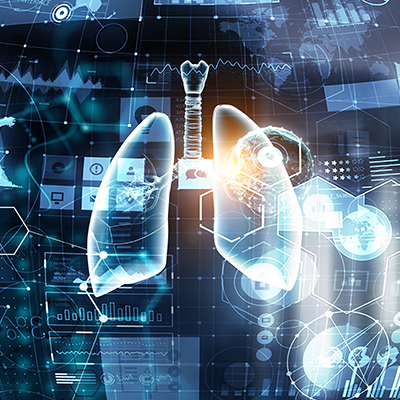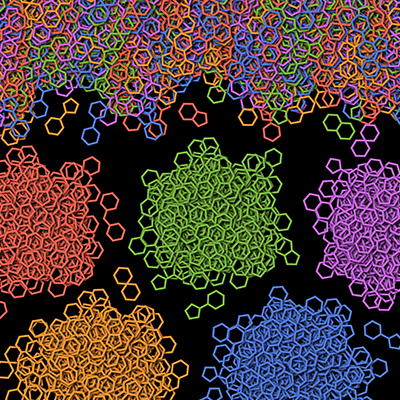February 3, 2021 -- Researchers from around the globe gathered to discuss innovations in laboratory techniques such as phenotypic profiling and flow cytometry for drug discovery applications at the Society for Laboratory Automation and Screening (SLAS) 2021 virtual meeting.
SLAS 2021, a conference and exhibition focused on laboratory automation, was held January 25-27 and featured more than 80 scientific talks. This is the first time the conference has been held virtually. This year, as in years past, the conference was focused on topics such as cell imaging, high-throughput screening, and single-cell analysis.
Drug discovery with phenotypic screening
A talk by Neil Carragher, PhD, of the University of Edinburgh, "Application of High-Content and Pathway Profiling Technologies to Advance Phenotypic Screening Strategies against Diseases of Unmet Therapeutic Need," illustrated how the latest high-content imaging and machine-learning tools are contributing to discovering drugs to treat esophageal cancer.
Defining phenomics drug discovery, Carragher said it "describes the application of the latest advances in genomics, proteomics, imaging and informatics tools to explore target biology and drug mechanisms across complex cell- and tissue-based models of disease." His lab uses sub-cellular imaging and machine learning to classify drug mechanisms of action at the phenotypic level, as well as transcriptomic and proteomic technology to classify mechanisms of action at the pathway network level.
In this lab, a high-content phenotypic profiling method is used with cell painting assays, which use protein stains to label cellular subcompartments, to create a phenotypic fingerprint at the single-cell level before and after compound treatment. The fingerprints can be utilized to create a machine-learning model to predict drug mechanisms of action based on comparison to a reference set of annotated compounds.
"Rather than using cell-based assays to predict what happens in more-complex in vivo models or a clinical scenario, we're using them to know more information on the mechanism of action and to link phenotype to genotype," explained Carragher.
In the case study on drug discovery for esophageal cancer, Carragher used a phenotypic approach to screen 20,000 compounds across eight cell lines, generating 3.9 million images measuring 720 parameters per cell in each image. These parameters were then used to create a machine-learning model to predict the mechanisms of action.
To further characterize the compound targets and their mechanisms of action, rather than do mass spectrometry-based target deconvolution at the transcriptomic and post-translational level, his lab used a reverse phase protein microarray and Nanostring Technologies' transcriptomic technology.
Where is flow cytometry technology headed?
In a presentation titled, "High-throughput Flow Cytometry in Drug Discovery: Current Practices and Future Prospects," Adam Zweifach, PhD, of the University of Connecticut discussed the upsides and downsides of his lab's use of high-throughput flow cytometry.
Flow cytometry is a technique used to detect and measure physical and chemical characteristics of a population of cells or particles. Zweifach began by defining the unique features of high-throughput flow cytometry, which include its automated sample acquisition process. Traditionally, this is accomplished utilizing simple serial acquisition through use of an autosampler. The drawback of this method is extremely slow plate acquisition times of around 40 minutes for 96-well plates and read times of two hours or longer.
In his presentation, Zweifach described an alternative. Air gap systems, which are only available on the IntelliCyte iQue systems made by Sartorius, perform continuous sampling from a sample stream and can acquire information from a 96-well plate in about 15 minutes with a required sample volume of only 10 µL.
Using a high-throughput flow cytometer to screen for novel immunomodulatory small molecules using no-wash antibody assays, Zweifach, in partnership with colleagues at the University of New Mexico, clustered four air drop systems, each screening one quadrant of a 1536-microwell plate. The labs worked with 5,000 cells per 10 µL, taking 2 µL from each well, resulting in the acquisition of around 1,100 cells per well.
In this experiment, reading the 1536-plate took about 12 minutes. Modifying the assays, Zweifach replaced chemical stimulation with physiological stimulation using antibody-coated beads. For example, anti-lysosomal-associated membrane protein 1 (LAMP-1) antibodies were used to detect the release of lytic granules indicative of cytotoxic T-cell responses. Ultimately, the lab screened 370,000 compounds.
But as Zweifach emphasized, it was not easy. He believes flow cytometry is best suited to low- to moderate-throughput applications that take advantage of multicolor capabilities. Although clustering of flow cytometers might provide a solution, he believes the cost of the instruments makes this prohibitive. A potential solution he touched upon was the use of microfluidics to create parallel flow streams that can be read simultaneously. Such a solution may also provide spatial information.
In the case of no-wash antibody assays, Zweifach then asked in regard to no-wash antibody assays: "Is it possible that some of the high-content readers can actually catchup and provide an alternative?"
As an example, he described SPT Labtech's mirrorball fluorescence cytometer. The mirrorball has five fluorescent channels and a scatter channel and a brightfield channel, and he speculated that additional channels could be added. But he also wondered if imaging processing would slow down the process. He noted that he has never used the system.
Tanya Samazan is managing editor of Instrument Business Outlook (IBO), a twice-monthly newsletter aimed at providing decision-makers with the latest and most complete information available on the life science and analytical instrument industry.
Disclosure: The Science Advisory Board is a sister company of IBO.
Do you have a unique perspective on your research related to drug discovery? Contact the editor today to learn more.
Copyright © 2021 scienceboard.net










